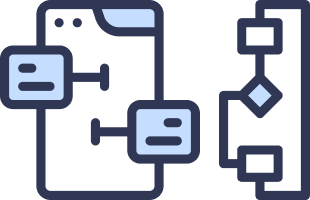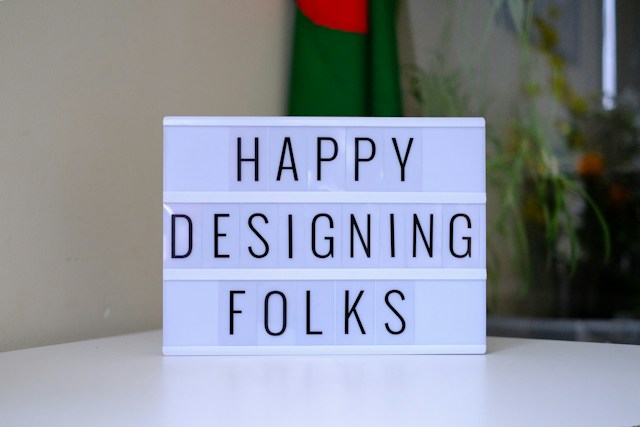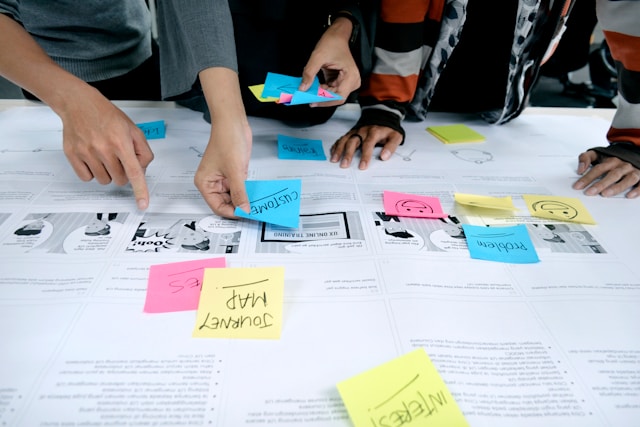Your product’s aesthetic appearance can do wonders for your brand.
With the right look, you can attract thousands of prospective users, helping you attain a much wider user base. You can even catch the eyes of target users who have yet to recognize your brand’s identity immediately.
That’s why big-name brands like Google, Disney, and even the Olympics look to graphic design to elevate their visual appeal.
So, what is graphic design?
In today’s guide, we’ll reveal the answer and everything you need to know about how graphic design works.
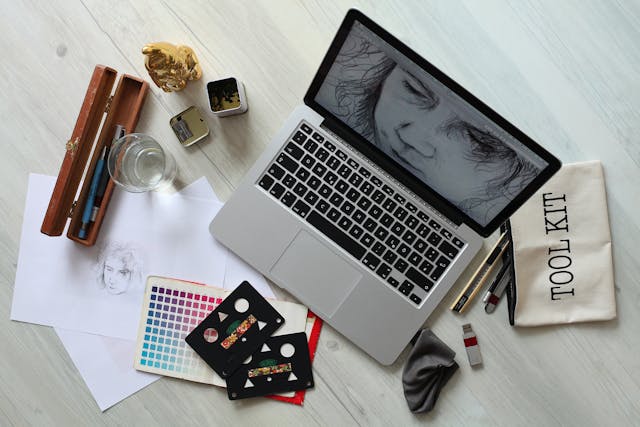
What Is Graphic Design?
Graphic design refers to the creation and arrangement of visual content.
With the right graphic artists, the process of graphic designing becomes a form of effective visual communication.
But how is graphic design a form of visual communication? That’s the ultimate question.
With certain visual elements, graphic designers can convey messages to a brand’s user base, ultimately enhancing their experiences. Given the importance of these design elements, you should become familiar with them straight away.
Here are some of the most common visual elements that graphic designers use to create compelling designs:
- Visual hierarchy
- Color
- Negative space
- Lines
- Shapes
- Textures
- Images
- Typographic elements
By using these elements correctly, graphic designers can inspire certain emotions from their users.
And we don’t have to tell you the benefits of keeping your users happy. Your graphic designer’s success will do that for us.
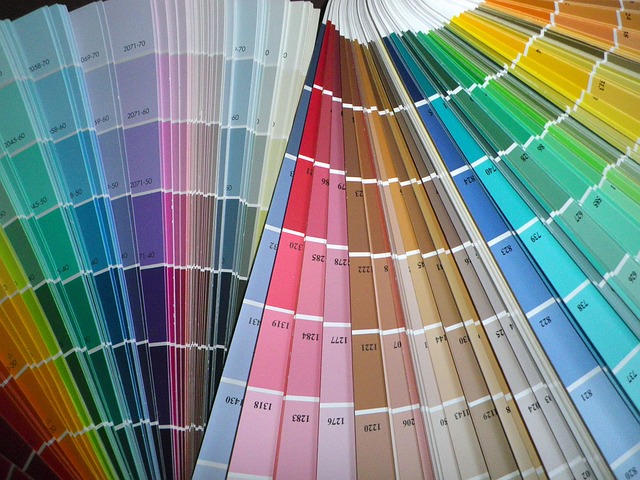
What Does a Graphic Designer Do?
Being a graphic designer is a little more complicated than simply selecting the stunning visual aspects of user interfaces.
Having said that, you’re probably asking yourself, “What does a graphic designer do?”
Well, we know that they create visual concepts to communicate messages and information. But there is so much more to a graphic artist’s daily responsibilities.
It’s worth noting that these responsibilities can vary depending on the artist’s workplace and specialty. Nonetheless, you will find commonalities across every type of graphic designer’s job description.
Let’s take a look at some of the commonalities/daily tasks of a typical graphic designer.
- Studying design briefs and determining the project’s requirements
- Working with clients to develop strategies that will engage target users
- Combining what they know of graphic design principles and the client’s vision to govern their designs
- Selecting appropriate design elements for a range of different formats, including websites, books, advertisements, and social media posts
- Creating designs that elevate a brand’s visual identity with graphic design software
- Designing rough drafts of potential design solutions to gain the client’s feedback and approval
- Collaborating with cross-functional teams and departments like marketing and sales
- Testing their designs across different media
- Reviewing and amending designs, if necessary, prior to finalization
- Keeping up to date with current design trends and tools

The Necessary Skills & Principles of Graphic Design
The previous section contained what seems like a lot of strenuous work, right?
That’s why it’s important that every graphic artist can support their work with the following graphic design skills:
- Ideation skills
- A knowledge of branding and marketing strategies
- Typography skills
- A knowledge of color theory and color psychology
- An ability to design for print
- UX design and UI design skills
- An ability to use and adapt to various editing and graphic design software
- A basic understanding of coding
- A knowledge of layout and composition
- An ability to create motion graphics
- An understanding of responsive design
- Collaboration and communication skills
- Time management skills
- Creativity and innovation
- Last but certainly not least, an excellent understanding of graphic design principles
Design principles also help graphic designers govern their design processes. So, let’s explore some of the graphic design principles in more detail.

1. Balance
Every element in a graphic designer’s work carries a visual weight, including color, size, and texture. The balance then refers to how graphic designers distribute this visual weight.
Graphic designers use two types of balance: symmetrical balance and asymmetrical balance.
Symmetry allows graphic designers to align elements of equal weight on their screens/pages. Asymmetry aligns “heavier” design elements with “lighter” ones to create a contrasting effect.

2. Contrast
Contrast emphasizes the visibility and importance of visual elements by pairing them with striking different ones. It is a great way of capturing and focusing the user’s attention and is necessary for accessible designs and emphasis.
Best of all, graphic designers can create contrast by using almost any visual element, including color, size, shapes, and fonts.
A classic example of trending contrasts is dark mode design.
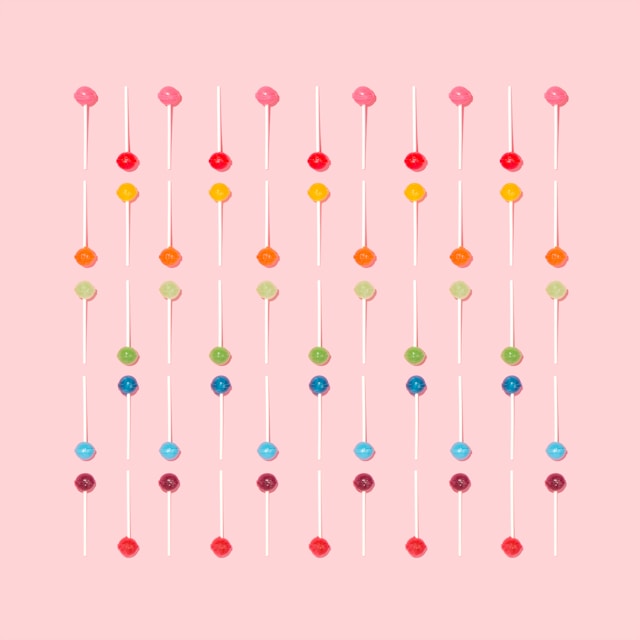
3. Repetition
The repeated use of certain design elements helps designers reinforce the messages/information they want to convey through their designs. Like in contrast, graphic designers can repeatedly use almost any visual element.
With repetition, designers can create a sense of order and establish a consistent brand identity that users can easily recognize.

4. Visual Hierarchy
The idea behind visual hierarchy is that the most important visual elements should command the most visual prominence. In other words, graphic designers should arrange their visual elements in their order of importance, helping users navigate the product.
A classic example of visual hierarchy is when designers make the product’s title bolder or larger than other textual content.
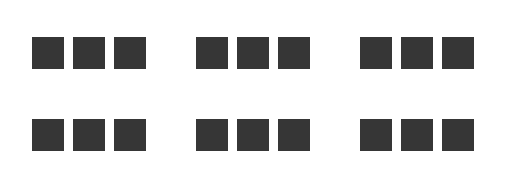
5. Rhythm
Rhythm in graphic design is just music in the sense that the spaces between music notes create rhythm.
In this instance, it’s the space between repeated visual elements that create rhythm.
This rhythm helps graphic designers create a visually appealing structure within their work that users can navigate easily.
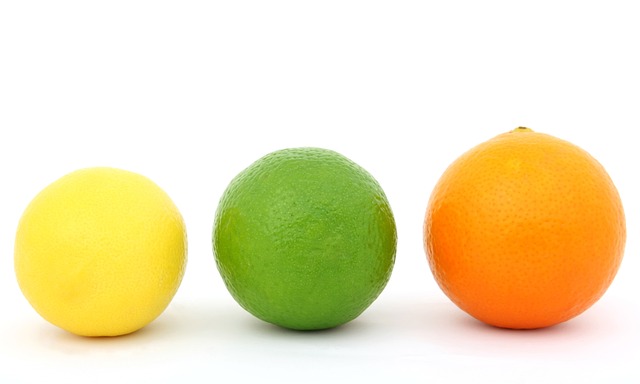
6. Proportion
Proportion is easy to understand. It simply refers to the relationship between differently-sized visual elements.
Proportion indicates which elements are more important than others. So, essentially, larger elements are more important than smaller ones.
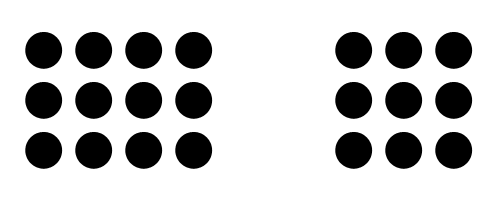
7. Proximity
Naturally, we assume that elements that appear close together relate to one another.
By using proximity, graphic designers can play into their users’ assumptions and make their navigation seamless. A good example of proximity is when a product’s image, description, and price are close together on an e-commerce website.

8. White Space
White space refers to any spaces within the graphic designer’s work that don’t include any design elements. The space is effectively empty.
White space, or negative space, makes print or digital content appear de-cluttered and easy to read. At the same time, designers can use white space to emphasize the significance of other design elements.
What Is the Purpose of Graphic Design?
There’s a lot that goes into being a graphic designer.
From packaging designs to designing logos, graphic designers excel at creating exceptional print and digital content. But what’s it all for? What’s the purpose of graphic design? Below, we have outlined the reasons why graphic design is important.
Brand Loyalty
Good graphic design doesn’t just help users discover a brand; it helps them remember it.
When graphic designers create intriguing user interfaces or interesting logos and images, they create memorable user experiences. This means that exceptional graphic design increases the chance of turning curious scrollers into brand-loyal customers.
First Impressions
Before you establish brand loyalty, you need to make a positive, impactful first impression, and graphic design will help you do that.
Usually, the first time your users experience your brand is due to marketing materials. These marketing materials can include anything from landing pages to social media posts to even product packaging.
In any of these instances, you don’t have much textual content to work with. So, you need to rely on graphic design to convey your brand’s personality.
With excellent graphic design, you can set the tone for the entirety of your relationship with your customers.
Consistency & Credibility
With visual consistency across all media platforms, you’ll reinforce the recognizability of your brand.
When users come to recognize your brand, it’s a way of saying you’re doing what you promised to do. This establishes your brand as worthy of your users’ trust and makes it appear more credible.
You can’t have this without the visual consistency that graphic designers create.
Types of Graphic Design You Need To Know About
Remember when we mentioned that graphic designers need to know how to create print and digital content?
Well, that statement only skims the surface of the many different types of graphic design.
To emphasize the power of graphic design, we’ve listed the different ways graphic design can elevate a brand’s presence.
- Branding: As you know, graphic design can effectively communicate a brand’s visual identity. With logos, colors, typography, imagery, slogans, and taglines, graphic designers can bring a brand to life.
- Marketing & Advertising: Graphic designers excel at attracting customers by creating assets for blog posts, newsletters, and social media campaigns.
- Print: Think billboard ads, posters, product packaging, magazines, brochures, business cards, and even merchandise.
- Motion Design & Animation: This subset of graphic design focuses on creating moving graphics and dynamic visual content. Motion design and animations are everywhere, including video tutorials, adverts, and games.
Graphic Design Examples To Learn From
Before you finish reading this article, we would like to point you in the right direction with some much-needed inspiration.
Look at these two very different graphic design examples and see how successful brands approach graphic design.

1. Graza
Graza is a company that sells authentic Spanish olive oil products.
Graza’s product packaging is colorful and bright, predominantly yellow and green. This use of color perfectly reflects Graza’s value proposition—it sells the highest-quality olive oil products.
What’s more, the packaging’s illustrations suggest that cooking with olive oil is more fun than you might think.
Most notably, their bottled Drizzle products display an illustration of a tap coming directly out of an olive. This illustration conveys the message that their products are fresh and locally sourced, inspiring trust from their customers.
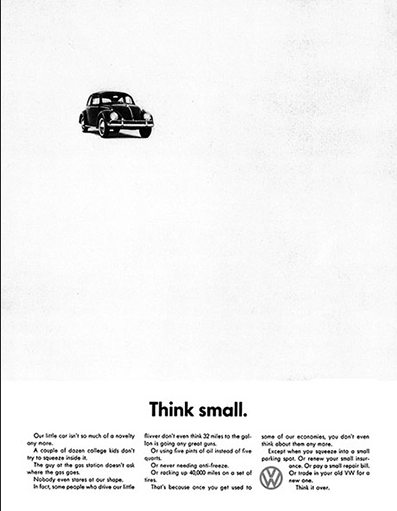
2. Volkswagen
Let’s go back to 1959 with the ad that revolutionized advertising campaigns: Volkswagen’s “Think Small” campaign.
This ad was a game-changer, and it’s not hard to see why.
By using white space, Volkswagen communicated a prominent feature of its cars without saying a word. Volkswagen cars are small. With the straightforward headline “Think Small” and a sans-serif font, Volkswagen immediately addressed the benefits of its products.
The lack of color also showed users that Volkswagen didn’t just want to dazzle them with visual effects.
The achromatic color scheme conveyed Volkswagen’s top priority – solving their customers’ pain points.
What Is Graphic Design? Concluding Thoughts
Graphic design is about meeting the expectations of both target users and clients, which is integral to a brand’s success. However, while you can truly create exceptional, memorable user experiences with graphic design, you’ll need some more resources in your arsenal.
You need user flow inspiration. Meet Page Flows.
Page Flows is a hub of must-have inspiration, collecting a wealth of user flow recordings, screenshots, and emails. We collect these valuable resources from big-name brands, including Google, Disney, and Vimeo.
Why?
To show designers how successful products design and organize their user flows, which is what makes a user’s journey seamless.
From onboarding to searching flows, we know what it takes to turn the most mundane flows into enjoyable, compelling experiences.
So, what is graphic design for Page Flows? It’s one of the aspects of brand development that you’ll learn how to master with us. Get started today to learn what it takes to turn prospective users into lifelong customers.
